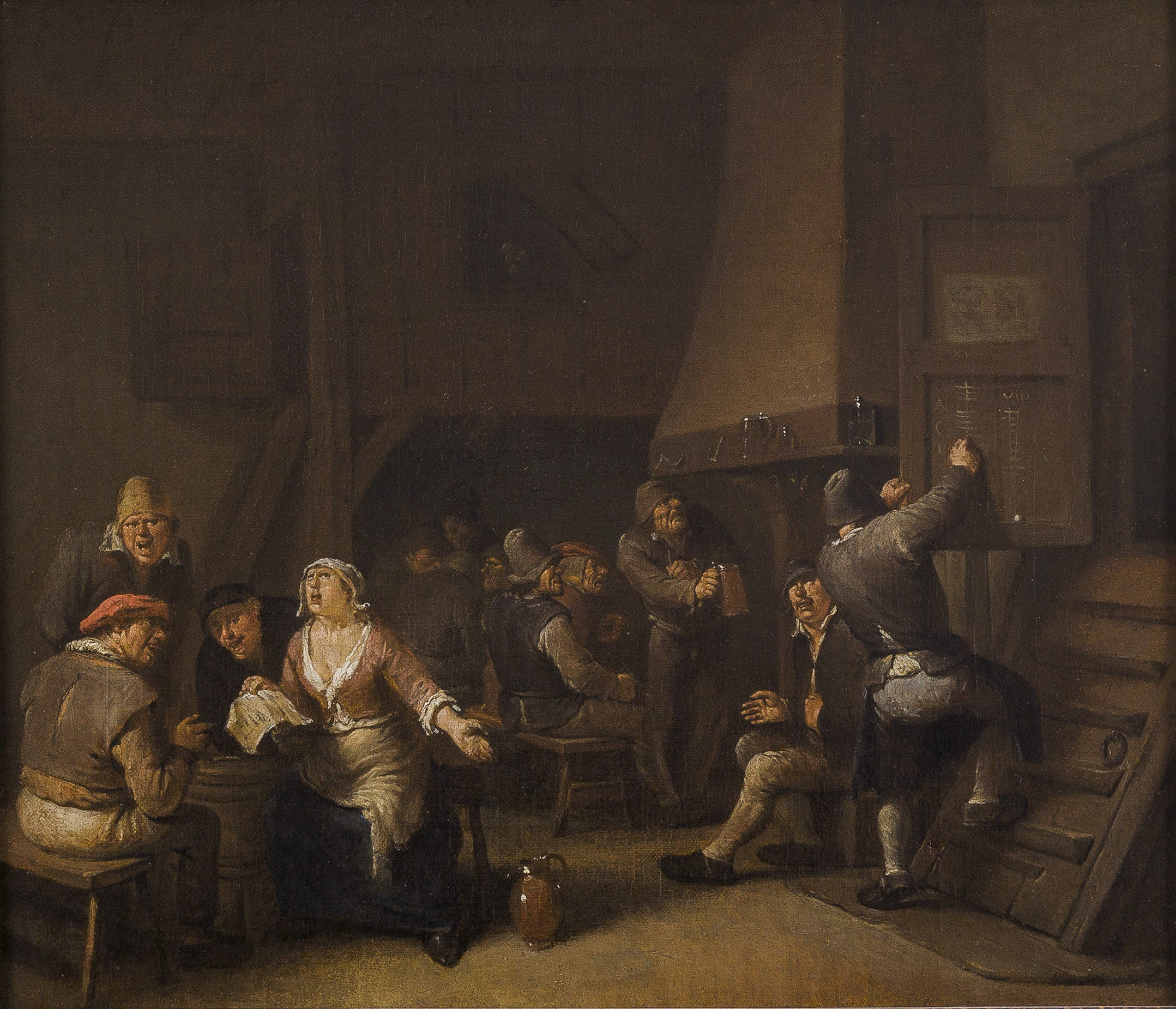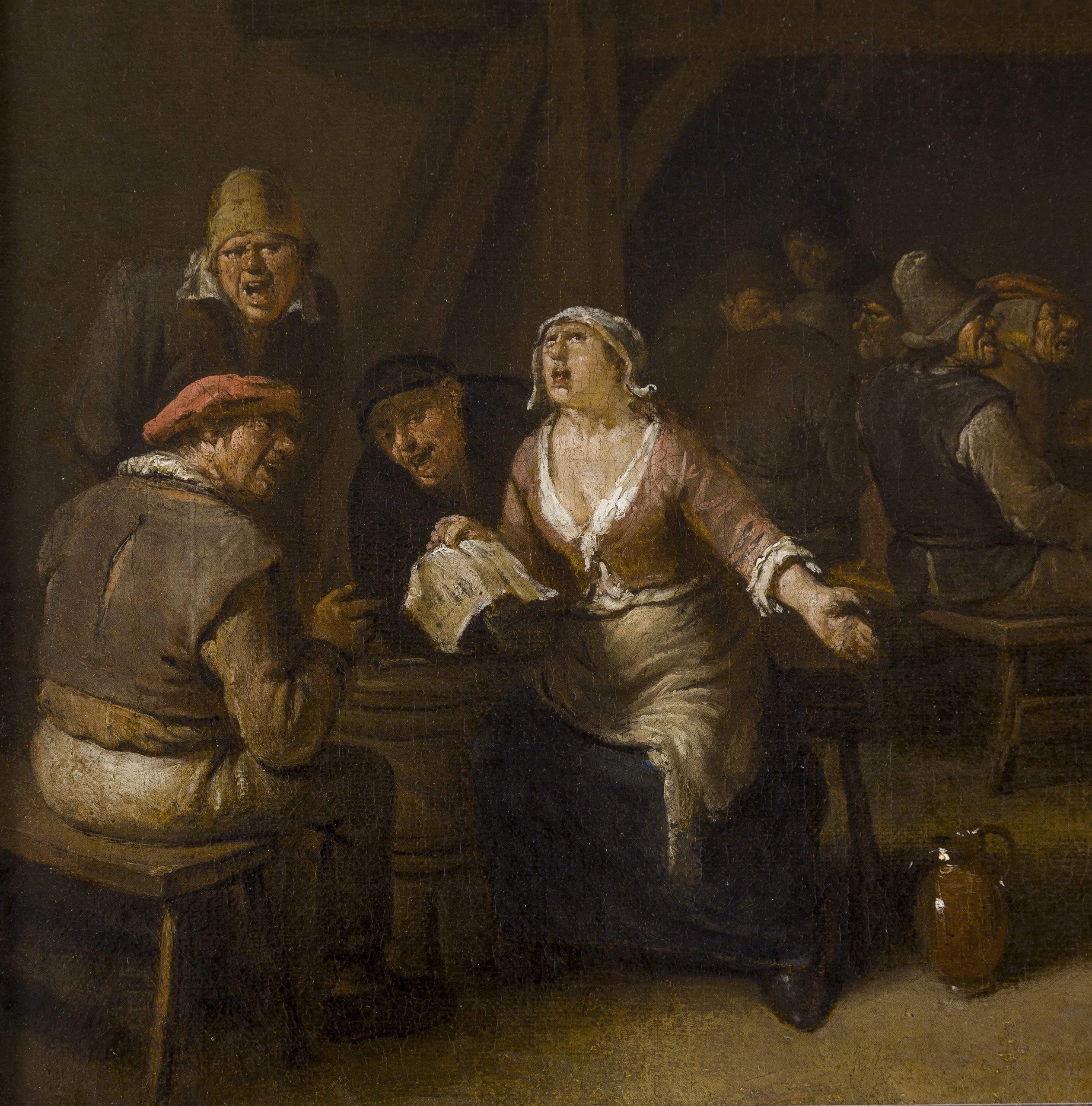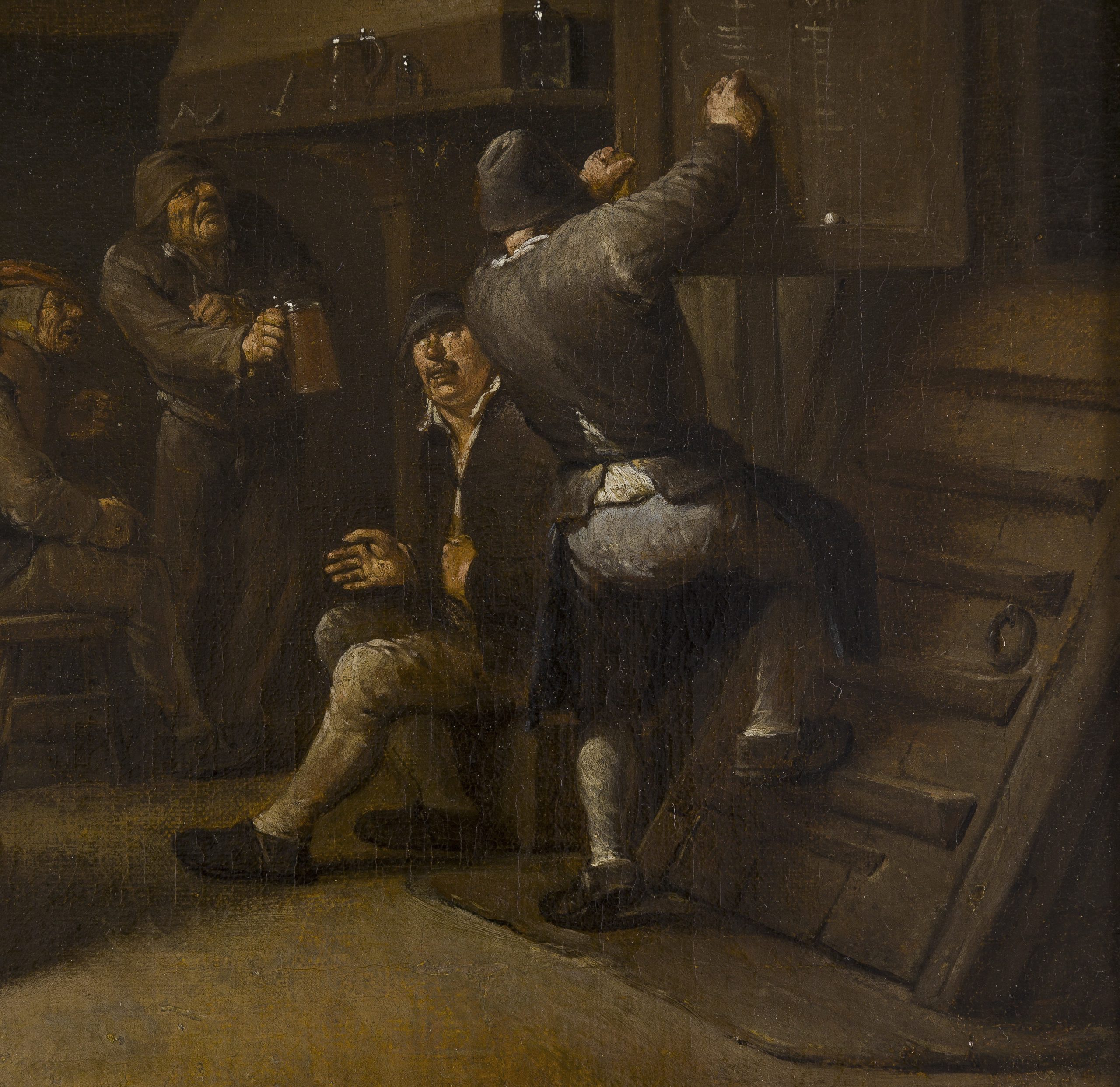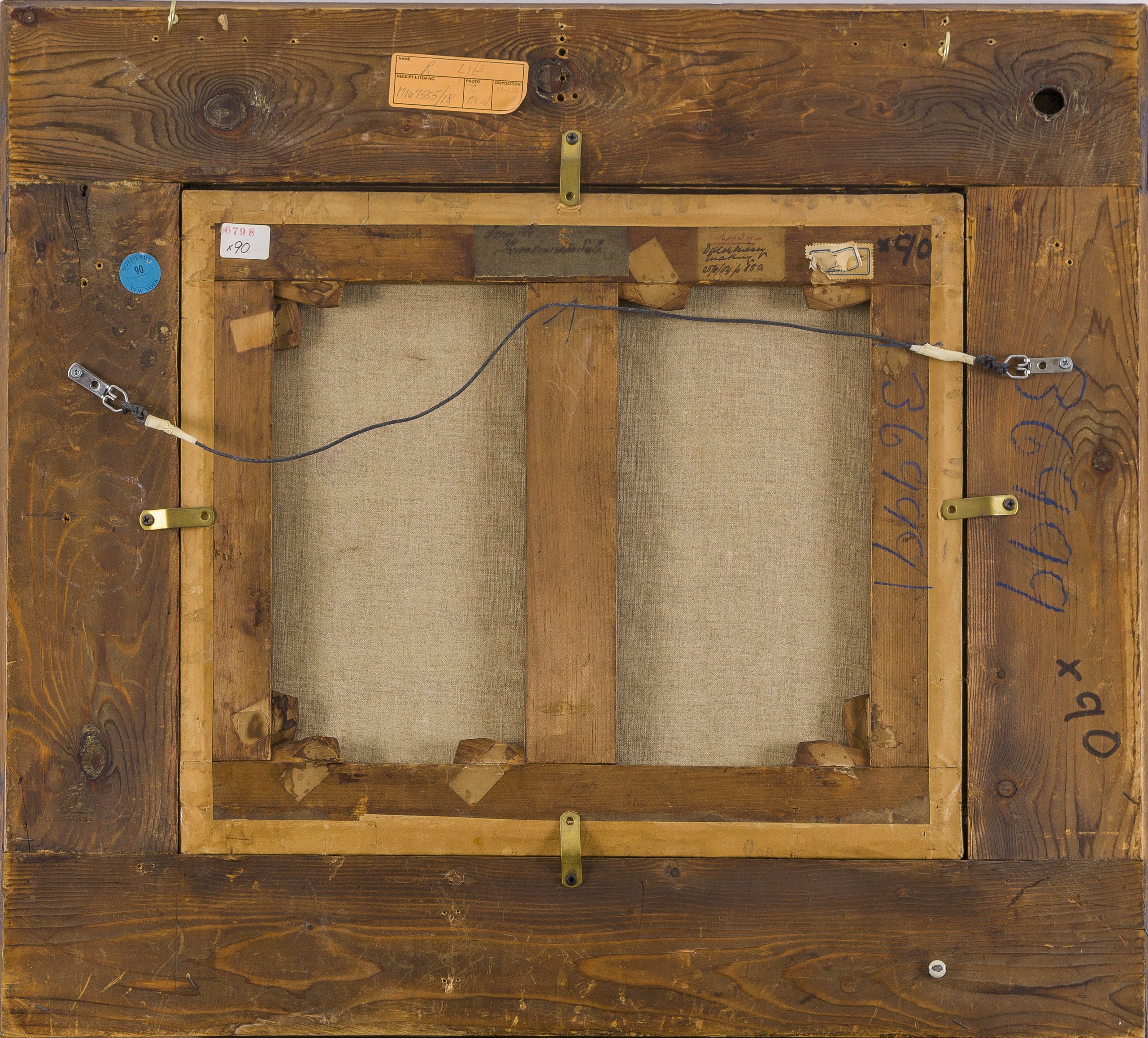EGBERT VAN HEEMSKERCK I (Haarlem 1634 – 1704 London)
Egbert van Heemskerck I (Haarlem 1634 – 1704 London)
Peasants in a Tavern
Oil on canvas, 34.9 x 50.2 cm (13.7 x 19.8 inch); framed in a modern brown-stained ripple frame of 17th-century model
Remains of signature and date ‘16[.]’ (on inside door at right)
Provenance
Throckmorton sale (according to an old label on the reverse of the stretcher); anonymous sale, Sotheby’s, 11 January 1996, lot 90 (est. $ 15,000-20,000); The Harry R. Calsing Trust, Cleveland Ohio
***
Egbert van Heemskerck was born in Haarlem in 1634 as the son of a doctor, Jasper Jaspersz van Heemskerck; after his death, Heemskerck’s mother Marytge van Stralen married the innkeeper Jan Wijnants, father of the eponymous landscape painter (1632–1684), who therefore became Egbert’s step-brother.1 Heemskerck is thought to have trained in Haarlem with Jan Miense Molenaer (c.1610–1668), and specialised in low-life genre scenes in the manner of David Teniers and Adriaen Brouwer. In May 1655 he travelled to Italy to study the works of Antiquity and contemporary masters, and upon his return in March 1661 he settled in Amsterdam.
In the early 1670s Holland was invaded by French forces, which caused an economic downturn, and Heemskerck emigrated to England. There he worked for John Wilmot, Earl of Rochester, and for an art dealer who was based in the Strand. He later rented attic rooms in the house of a tobacco seller in Drury Lane. Heemskerck’s genre pieces were highly favoured by English patrons, as is beautifully illustrated by this work, which is full of charming details: at the left, four figures are engaged in song, while drinkers are telling stories by the fireplace. A group of figures seems to be playing a game in the back of the room, possibly backgammon, while a figure at the right chalks up the score on the inside of a door. The door is decorated with caricature heads, probably drawings – Heemskerck himself was also an active draughtsman. The artists’s son Egbert II (c.1676– 1744) was trained by his father and worked in his manner, but did not possess his father’s talent.
Paintings by Heemskerck are represented in many museum collections, including the Musée des Beaux Arts in Bordeaux, the Städel Museum in Frankfurt am Main, the Nationalmuseum in Stockholm and the Frans Hals Museum in Haarlem. Our charming painting can be compared to one of Heemskerck’s most celebrated works, which is preserved in the Rijksmuseum in Amsterdam: an Interior with Backgammon Players, dated 1669 (fig).2 Although Heemskerck’s works can be of varying quality, the present work is of particularly high quality and can be considered one of his finest works.
In a letter dated 1 April 1957, Dr Walther Bernt conformed to be the painting to be by Heemskerck. Based on photographs, Fred Meijer, formerly of the RKD, The Hague, has also confirmed the present painting to be by Heemskerck the Elder.
SOLD
1. For Heemskerck, see: R. Raines, ‘Notes on Egbert van Heemskerck and the English Taste for Genre’, The Walpole Society 53 (1987), pp. 119-142 and H. Mount, ‘Egbert van Heemskerck's ''Quaker Meetings'' rivisited’, Journal of the Warburg and Courtauld Institutes 56 (1993), pp. 209-228.
2. Oil on canvas, 40 x 53 cm, signed and dated ‘HKerck 1669’, inv. no. SK-A-2180; P.J.J. van Thiel a.o., All the paintings of the Rijksmuseum in Amsterdam: a completely illustrated catalogue, Amsterdam/Maarssen 1976, p. 264, repr.





